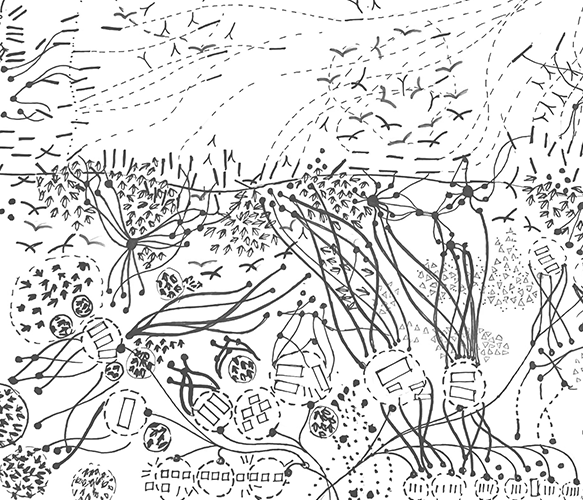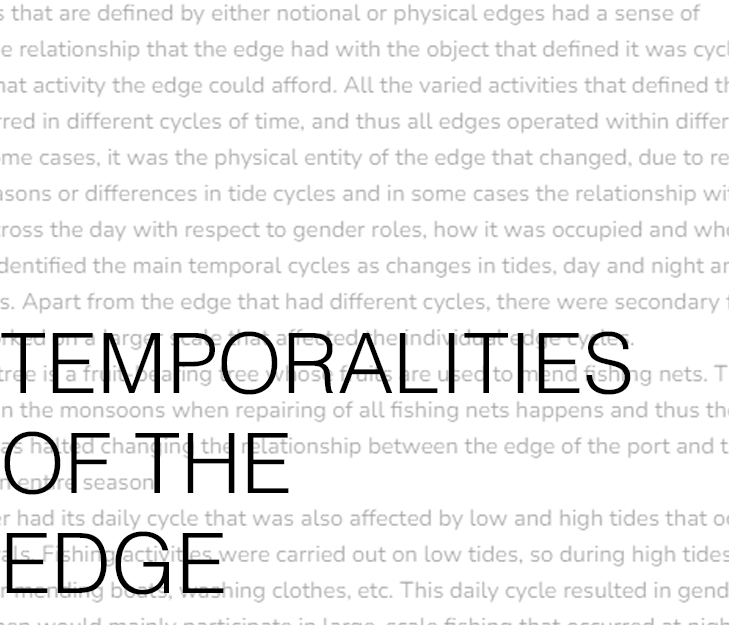Situated in our contemporary context of climate change, Architectural Compositions in Tropical Monsoonal Grounds (ACTMG) is a conceptual and methodological inquiry into the changing relationships between human and other-than-human entities in the villages of Chellanam and Kumbalangi located in the periphery of Kochi, Kerala. Architecture, here, implies the will and act of constructing relationships between different human and other-than-human entities. And this study maps the different compositions that these relationships are taking in response to climate change and its related challenges.
ACTMG is based on a week-long fieldwork conducted by 39 third-year architecture students. The students were divided into eight groups and each group followed a methodical process. It began with a dérive or a slow, purposeless walk through the villages. While making, each group made a live map of the different other-than-human entities that they encountered along the way. The walk provided a basis to narrow down on one specific entity that each group would follow.
In the second stage, these entities became entry points and were followed to study the different temporal rhythms within which they are located. In the third step, the field study was expanded to map the different kinds of networks or relationships within which these entities are situated at different scales. And the last step involved a spatial study of the interplay between built forms, humans, and these entities. Post-fieldwork, the field material was explored further through different drawing methods.
The 4x8 grid composes this study. Each square on the grid takes the reader to the detailed studies of different entities (from top to bottom): Tides, Water Bodies, Dilapidated Houses, Heat, Harbour, Sound, Edges, and Vegetation, using different methods (from left to right): Dérive, Rhythms, Networks, and Spatial Affordances.































